Abstract
Trichothecenes mycotoxins, T2-toxin and diacetoxyscirpenol were investigated for their effect upon T-independent murine immune responses. Both anti-polyvinylpyrrolidone and anti-dinitrophenylficoll responses were enhanced by chronic administration of these toxins. Spleen cells from T2-toxin-treated animals revealed significantly less Thy 1.2+ cells than controls. Spleen cells from Fusarium crude extract-treated animals had a depressed response to phytohaemagglutinin (PHA) as compared with controls. Normal recipients given spleen cells from T2-toxin-treated mice were shown to generate approximately 50% less plaque-forming cells against sheep red blood cells than controls. It is suggested that these effects occur as a result of altered T suppressor-cell function.
Full text
PDF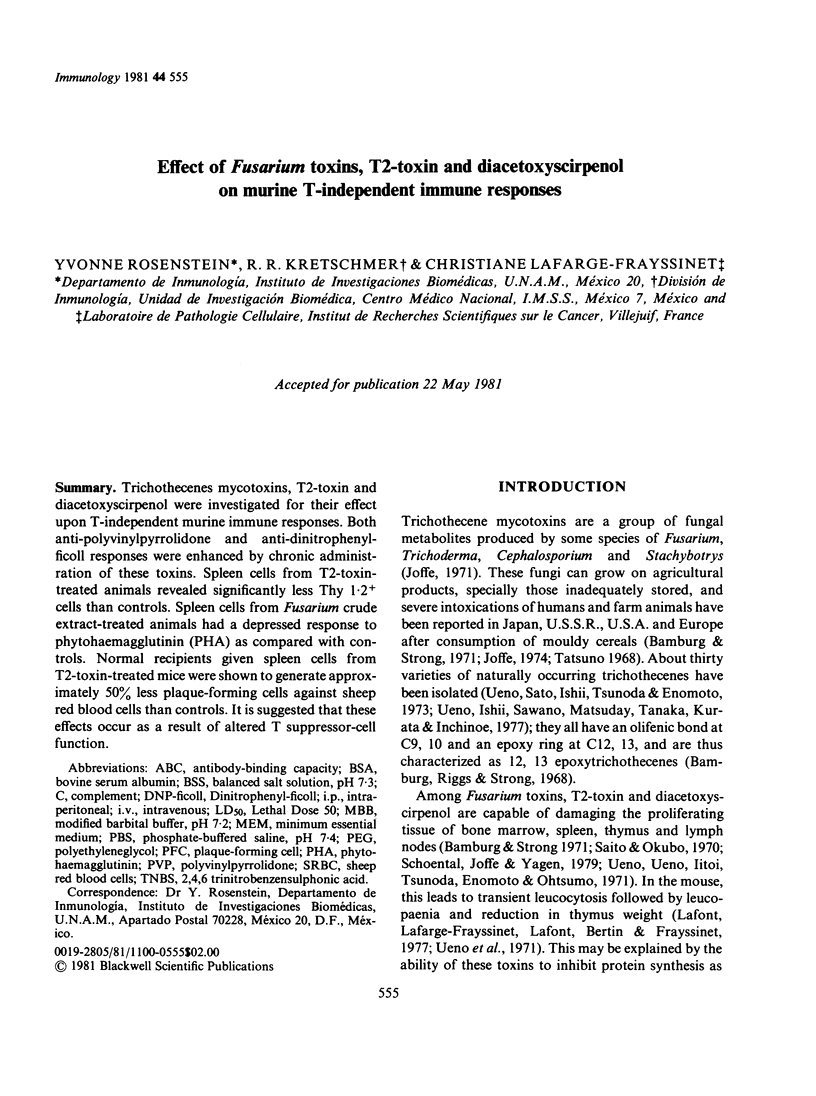

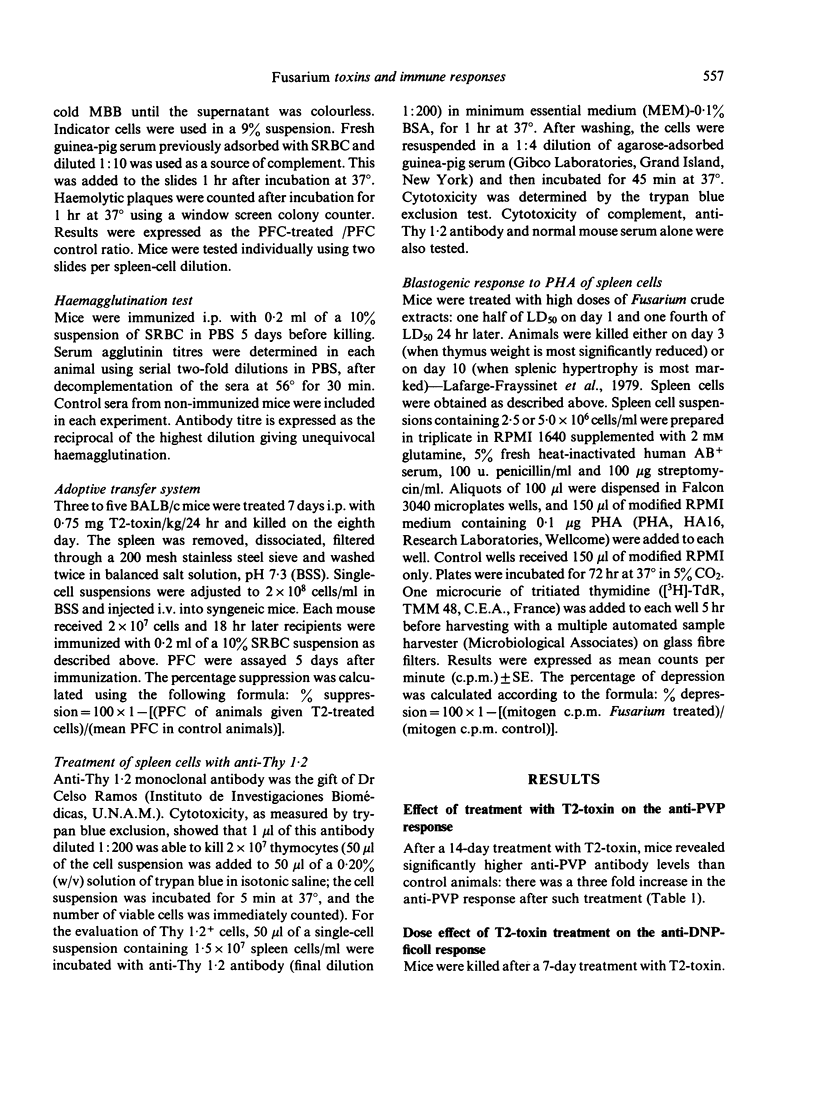
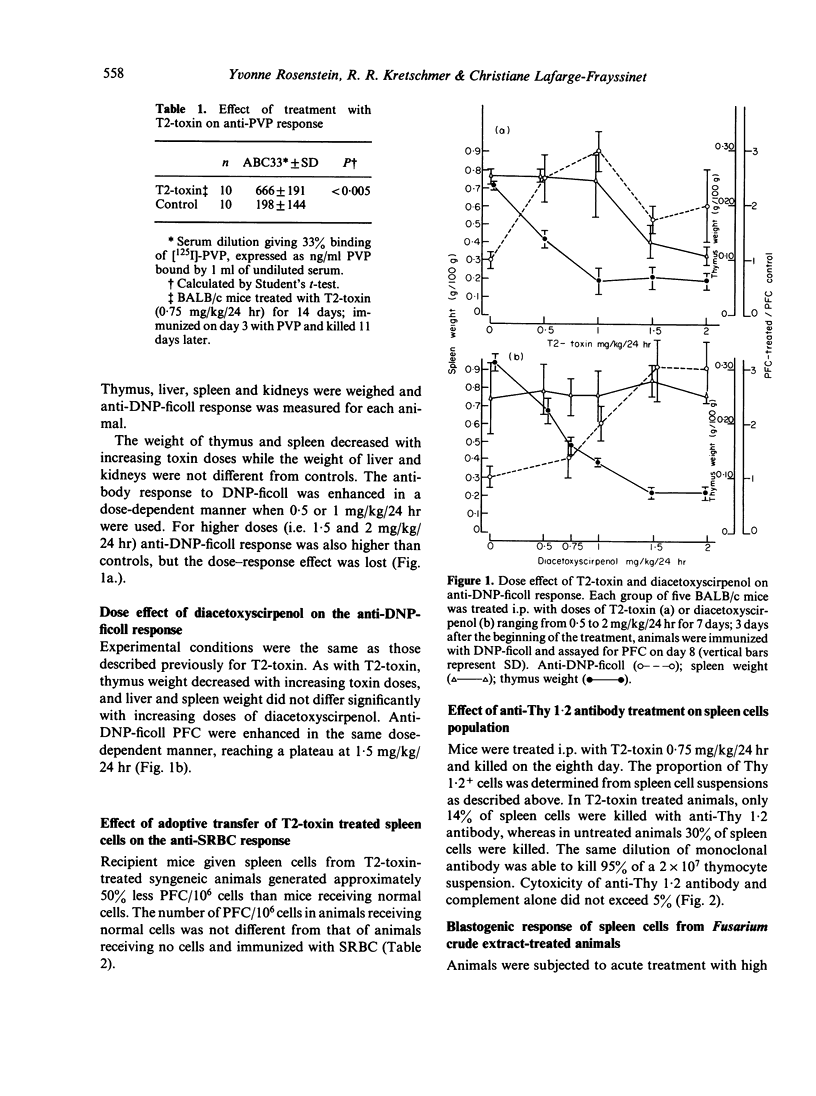
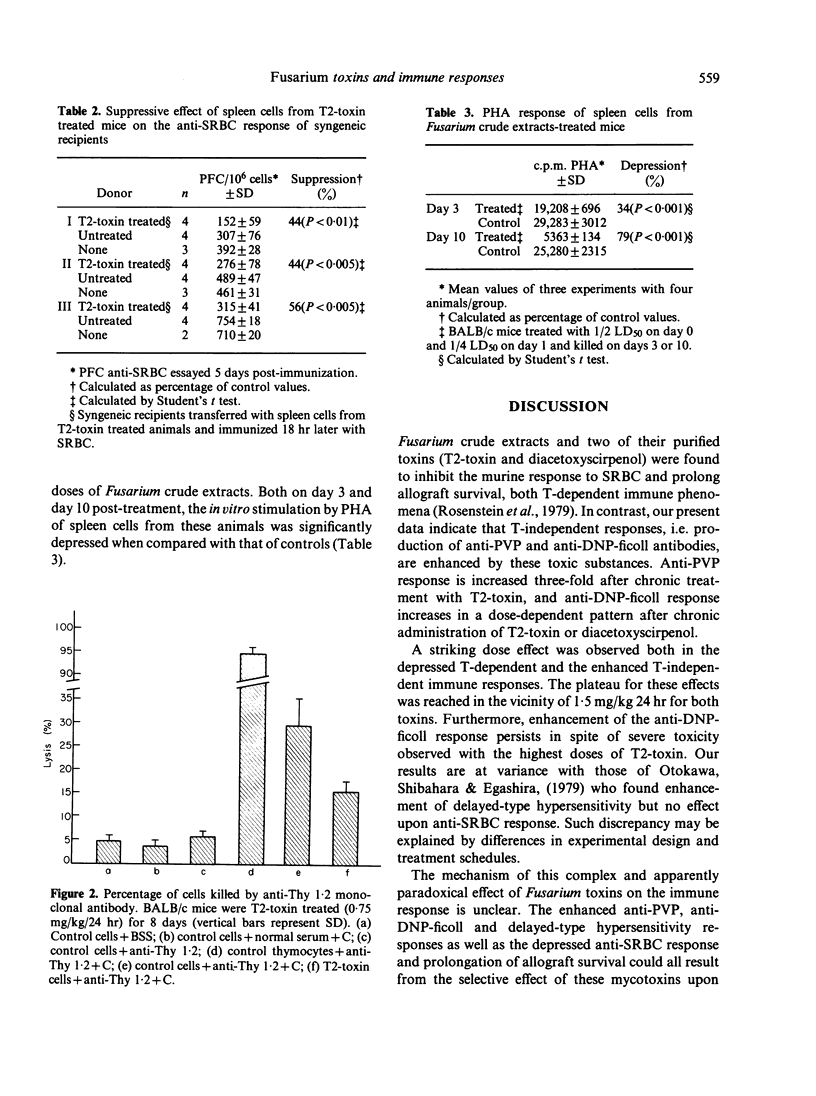
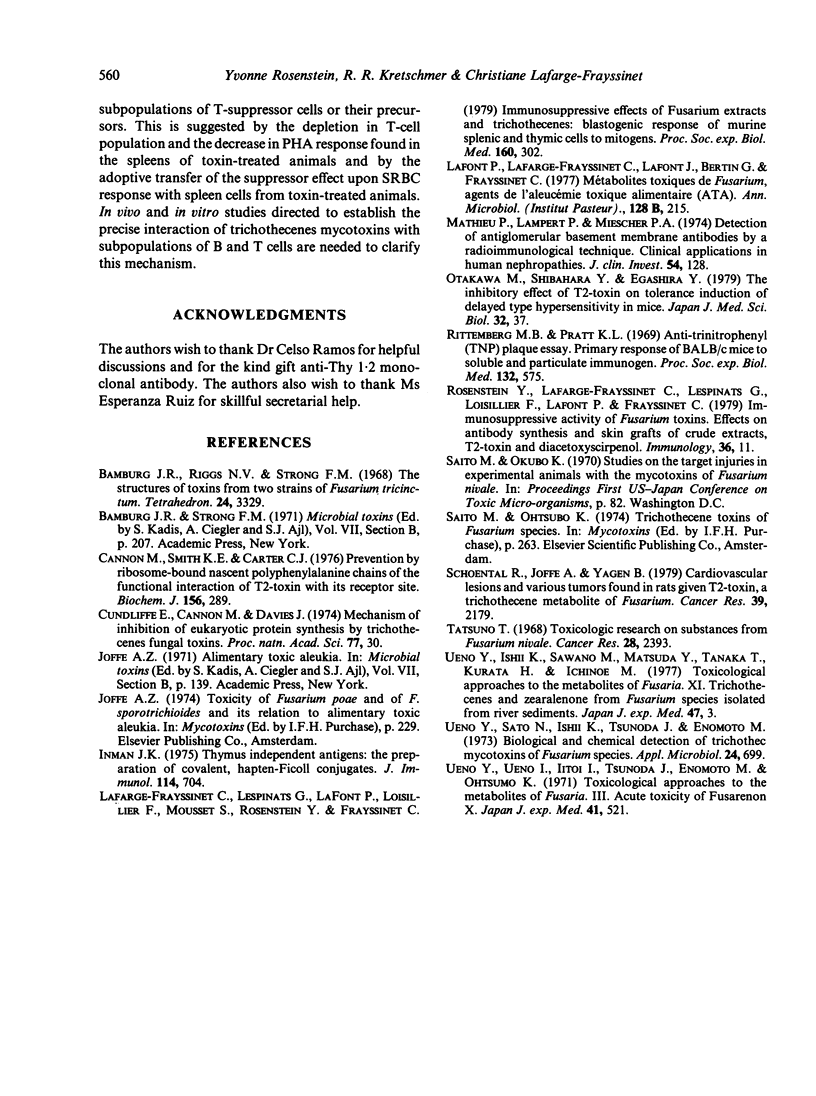
Selected References
These references are in PubMed. This may not be the complete list of references from this article.
- Bamburg J. R., Riggs N. V., Strong F. M. The structures of toxins from two strains of Fusarium tricinctum. Tetrahedron. 1968 Apr;24(8):3329–3336. doi: 10.1016/s0040-4020(01)92631-6. [DOI] [PubMed] [Google Scholar]
- Cannon M., Smith K. E., Carter C. J. Prevention, by ribosome-bound nascent polyphenylalanine chains, of the functional interaction of t-2 toxin with its receptor site. Biochem J. 1976 May 15;156(2):289–294. doi: 10.1042/bj1560289. [DOI] [PMC free article] [PubMed] [Google Scholar]
- Cundliffe E., Cannon M., Davies J. Mechanism of inhibition of eukaryotic protein synthesis by trichothecene fungal toxins. Proc Natl Acad Sci U S A. 1974 Jan;71(1):30–34. doi: 10.1073/pnas.71.1.30. [DOI] [PMC free article] [PubMed] [Google Scholar]
- Inman J. K. Thymus-independent antigens: the preparation of covalent, hapten-ficoll conjugates. J Immunol. 1975 Feb;114(2 Pt 1):704–709. [PubMed] [Google Scholar]
- Lafarge-Frayssinet C., Lespinats G., Lafont P., Loisillier F., Mousset S., Rosenstein Y., Frayssinet C. Immunosuppressive effects of Fusarium extracts and trichothecenes: blastogenic response of murine splenic and thymic cells to mitogens. Proc Soc Exp Biol Med. 1979 Mar;160(3):302–311. doi: 10.3181/00379727-160-40439. [DOI] [PubMed] [Google Scholar]
- Lafont P., Lafarge-Frayssinet C., Lafont J., Bertin G., Frayssinet France Métabolites toxiques de Fusarium, agents de l'aleucémie toxique alimentaire. Ann Microbiol (Paris) 1977 Aug-Sep;128(2):215–220. [PubMed] [Google Scholar]
- Otokawa M., Shibahara Y., Egashira Y. The inhibitory effect of T-2 toxin on tolerance induction of delayed-type hypersensitivity in mice. Jpn J Med Sci Biol. 1979 Feb;32(1):37–45. doi: 10.7883/yoken1952.32.37. [DOI] [PubMed] [Google Scholar]
- Rittenberg M. B., Pratt K. L. Antitrinitrophenyl (TNP) plaque assay. Primary response of Balb/c mice to soluble and particulate immunogen. Proc Soc Exp Biol Med. 1969 Nov;132(2):575–581. doi: 10.3181/00379727-132-34264. [DOI] [PubMed] [Google Scholar]
- Schoental R., Joffe A. Z., Yagen B. Cardiovascular lesions and various tumors found in rats given T-2 toxin, a trichothecene metabolite of Fusarium. Cancer Res. 1979 Jun;39(6 Pt 1):2179–2189. [PubMed] [Google Scholar]
- Tatsuno T. Toxicologic research on substances fro Fusarium nivale. Cancer Res. 1968 Nov;28(11):2393–2396. [PubMed] [Google Scholar]
- Ueno Y., Sato N., Ishii K., Sakai K., Tsunoda H. Biological and chemical detection of trichothecene mycotoxins of Fusarium species. Appl Microbiol. 1973 Apr;25(4):699–704. doi: 10.1128/am.25.4.699-704.1973. [DOI] [PMC free article] [PubMed] [Google Scholar]
- Ueno Y., Ueno I., Iitoi Y., Tsunoda H., Enomoto M. Toxicological approaches to the metabolites of Fusaria. 3. Acute toxicity of fusarenon-X. Jpn J Exp Med. 1971 Dec;41(6):521–539. [PubMed] [Google Scholar]


